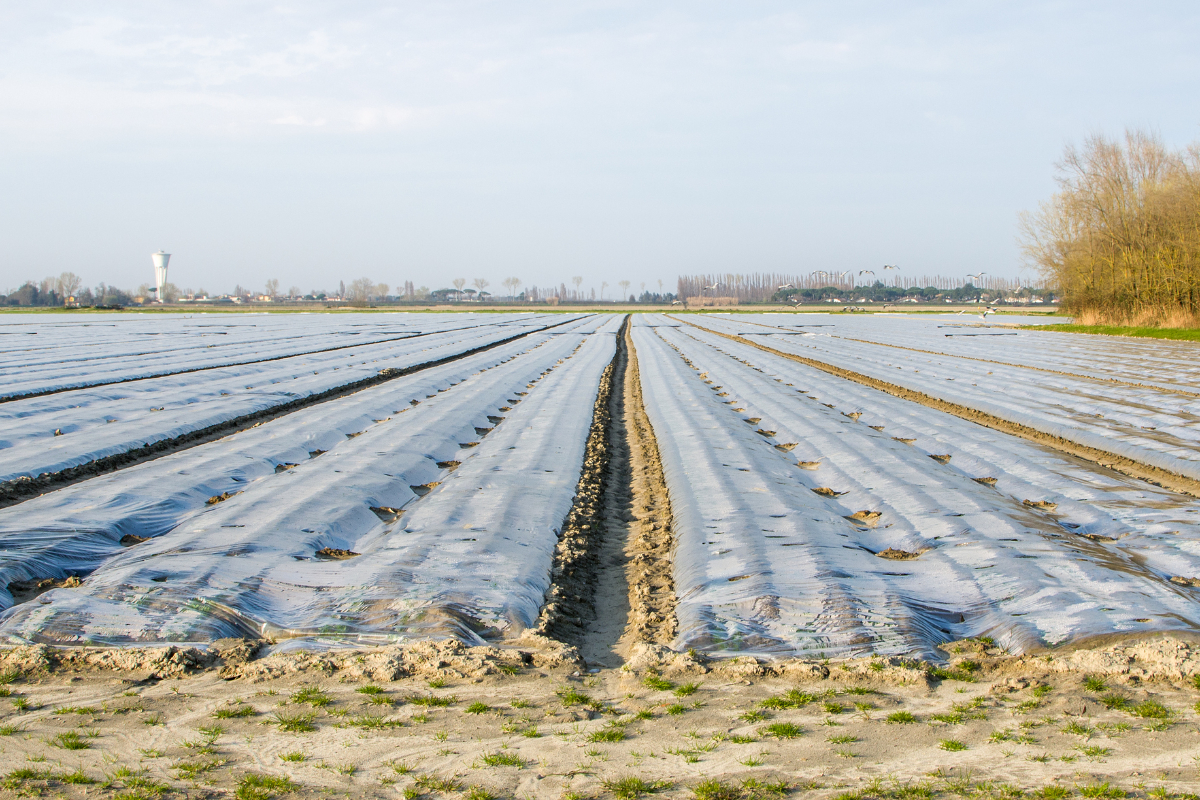
Those concerned with agricultural plastics in the soil are looking to address the problem from several fronts.
Acknowledging that there is no silver bullet, the FAO report outlines a variety of recommendations that span several different policy arenas, including eliminating the use of the most problematic agricultural plastics, investing in biodegradable substitutes, and mandatory extended producer responsibility obligations for appropriate end-of-life management. The authors of the report also suggest establishing an international, voluntary code of conduct on sustainable use, which will be discussed by the FAO’s Committee on Agriculture in July, said Thompson, one of the report’s authors.
“A voluntary code can have a much wider scope, because it doesn’t require consensus between all the countries that are debating it,” said Thompson. “It can set responsibilities for a wider range of stakeholders rather than just national governments.”
“There are links between the climate crisis, plastics, biodiversity, and toxics. They are all part of the same story.”
The report also supports mandated solutions. Carlini and her colleagues, for example, are gearing up for negotiations on drafted resolutions for a global, legally binding plastics treaty at the U.N. Environment Assembly (UNEA) in Nairobi this month. While countries joined together at UNEA in 2019 and previous sessions to pass a resolution on marine plastic pollution, Carlini is advocating for policymakers to take a broader approach.
“We’re extracting fossil fuels and using them to make chemicals and pesticides and plastics that are then polluting the world,” said Carlini. “There are links between the climate crisis, plastics, biodiversity, and toxics. They are all part of the same story.”
Meanwhile, Nizzetto is working with PAPILLIONS, a research project supported by the European Commission to study the lifecycle of agricultural plastics and their long-term impacts. The group is calling on policymakers to establish sustainability criteria for agricultural plastics, including biodegradability standards, life-cycle traceability, and increased funding for research that investigates the complex interactions among plastics and other pollutants in soils, including pesticides and heavy metals.
In the U.S., potential solutions to address agricultural plastics have been slower to develop.
The FAO report emphasizes solutions that embrace the “polluter pays” principle, including Extended Producer Responsibility (EPR) schemes that promote closed-loop recycling of agricultural plastics, funded by the corporations that produce them. With a mandated EPR system, the producers of agricultural plastics would be responsible for funding and developing the infrastructure needed to collect and recycle those materials based on government regulations that outline sustainable management.
“If the corporation is required to pay for end-of-life disposal and it’s costly, they will be incentivized to reduce the toxins in their products or design them for recyclability,” said Suna Bayrakal, director of policy and programs at the Boston-based Product Stewardship Institute. “EPR laws shift the financial and management responsibility to the producers, all while retaining government oversight.”
EPR programs currently exist in 33 states and Washington, D.C. for a variety of products like batteries, paint, pharmaceuticals, and tires. Last year, Maine and Oregon passed the first-ever U.S. EPR laws to require companies that put consumer packaging on the market to contribute to the costs of collection and recycling. But few of these mandates cover agricultural plastics, aside from California’s recycling program for pesticide containers of 55 gallons or less.
